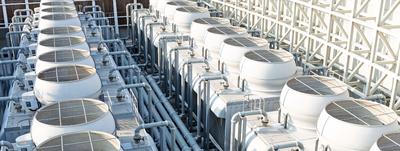We make your waste heat systematically usable!
This reduces energy consumption and operating costs.


We make your waste heat systematically usable!
This reduces energy consumption and operating costs.
The efficient use of waste heat offers companies numerous advantages, and not just in terms of legal obligations. The targeted integration of waste heat into the production process can successfully replace conventional heat generation from conventional energy sources. This not only leads to a reduction in CO2 emissions, but also to considerable savings in terms of energy and the associated costs. Particularly in view of rising energy costs and the predicted increase in the price of CO2, there are significant opportunities for cost savings. The use of waste heat therefore not only represents an economically sensible approach to optimizing energy consumption, but also marks a significant step away from fossil fuels towards a sustainable industrial process.
Worth knowing: The Energy Efficiency Act (EnEfG) "Act to Increase Energy Efficiency in Germany" was passed in November 2023, which states that
The generation of waste heat must be avoided wherever possible and unavoidable waste heat must be reused. All companies with an energy consumption >2.5 GWh/a are obliged to determine and report their waste heat potential.
Waste heat from processes, such as from chillers, can be decoupled using heat exchangers and, depending on the temperature level, used directly or harnessed using a heat pump.
The heat source is a process to be cooled, which emits heat. For example, chillers and air conditioning units emit the heat extracted from the processes as waste heat. The heat can be extracted from storage rooms, cold water production, cooling processes, but also from data centers and drying processes.
The extracted heat is distributed, converted or stored efficiently and adapted to the sink using intelligent heat distribution. This is done with heat pumps and heat exchangers. Recoolers are also part of the system to release heat into the environment when there is no need for it.
A heat sink is a process component that absorbs heat. Instead of providing this required heat with fossil combustion, this heat can be extracted from the distribution network. Processes that require heat include radiators and ventilation units for air conditioning, reactors and fermenters, but all applications that require steam are also heat sinks. If there is no immediate demand and storage is not possible, it is possible to feed the heat into a heating network.
1 Determining the potential using generator data
The first step is to determine the potential for energy recovery. This is usually done simply using the producer data based on annual invoices for primary energy sources such as gas and oil and the electricity consumption of the main components such as cooling generators, which collect the heat from the plant via the cold water. This shows how much primary energy can be substituted with waste heat.
2. determining real demand - collecting, measuring and analyzing the data
In order to determine the real demand, the main consumers are identified and analyzed. This requires an on-site inspection, documentation and measurement data from the various systems. Additional local potential often arises here through simple measures such as reducing temperature levels, regulation, insulation and hydraulic balancing.
3 PINCH analysis of heat sources and sinks
The data is systematically compiled in a PINCH analysis and different conditions are broken down by time such as day & night, summer & winter and load peaks such as batch processes. Here, the individual potentials with necessary temperature strokes can now be seen in detail.
4. measures development
On the basis of the PINCH analysis, various measures are developed, such as the introduction of heat pumps, energy storage systems, free cooling and the networking of processes. The following applies to heat pumps: the higher the stroke, the lower the efficiency.
5. profitability analysis with engineering report
Points 1 to 4 are summarized in a detailed engineering report, which provides you with meaningful recommendations for your decisions.
6. project support
We also support you in the implementation of the measures, such as the planning of layout and hydraulics, functional descriptions, risk assessment and proof of the effectiveness of the measures.
Thanks to our in-depth knowledge as a specialist company for refrigeration technology and our expertise in the field of waste heat recovery, we are able to offer you comprehensive advice. Our overriding goal is to build a long-term and successful partnership with your company. We are not only at your side for current issues, but would also like to provide you with ongoing support and advice for future projects.
In previous projects, we have advised pharmaceutical customers and processing companies, among others. We have developed innovative waste heat concepts that achieve payback periods of less than 5 years and enable considerable energy and CO2 savings. The efficient use of waste heat is not only a cost-saving measure, but also an environmentally conscious approach to reducing resource consumption and minimizing the ecological footprint of industrial processes. Together we want to make a contribution to a CO2-neutral future.
Energy utilization of previously discharged waste heat, saving energy and reducing costs, increasing efficiency and optimizing processes
Sustainable use of resources through energy recovery, moving away from fossil fuels towards environmentally conscious industrial processes and a CO2-neutral future
Compliance with regulations and legal obligations such as the Energy Efficiency Act
Economic optimization of the industrial process, cost savings by reducing energy consumption and minimizing CO2 emissions with the associated CO2 tax
Independence from fossil fuels
Maximum energy utilization and reduction of CO2 emissions, towards an emission-free and climate-neutral future

